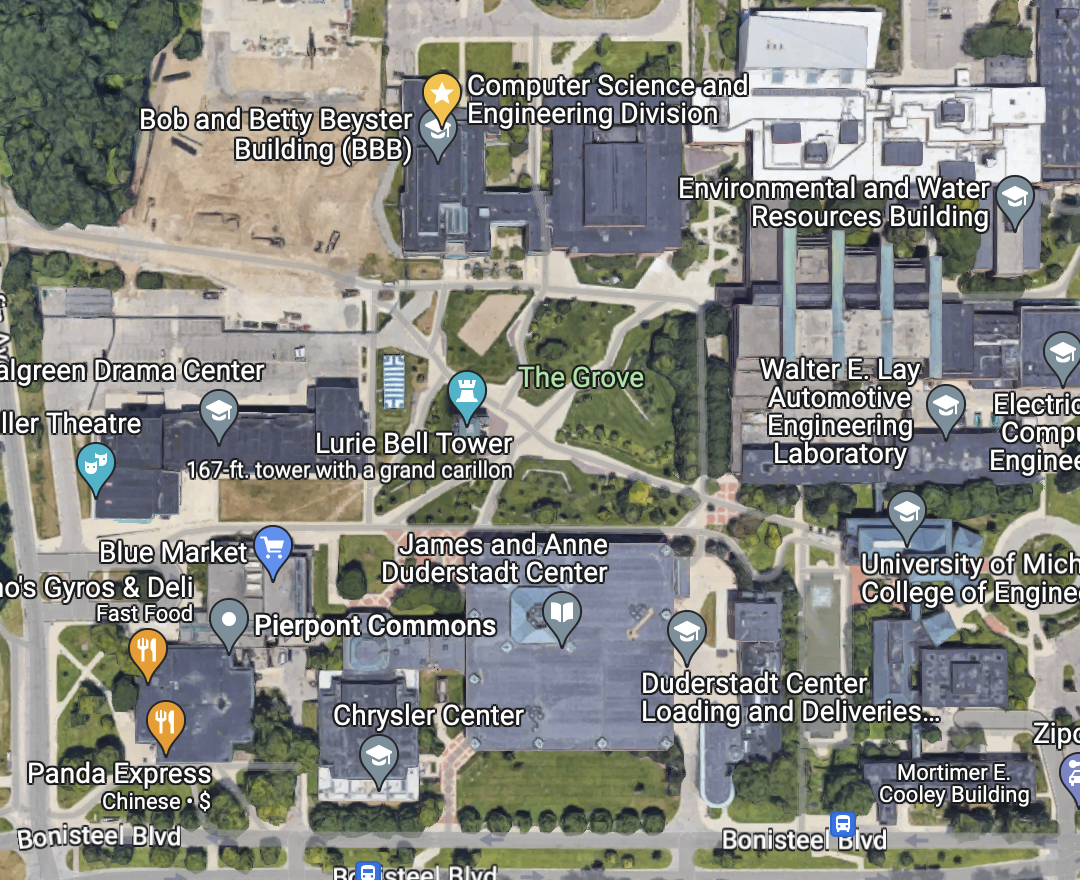About Me
Teach
EECS 270: Introduction to Logic Design: Atlas, Canvas
CMPLXSYS 251: Computational Social Sciences: Atlas, Canvas
EECS 498-019: Performance Analysis of Computer Systems:
Course Flier,
Syllabus.
Research
Network Survivability
![<h1>Network Survivability</h1>
<p>I have worked in the network survivability area during three phases of my career.</p>
<p>
My Ph.D. dissertation developed a fast approximation algorithms for the spare capacity problems on the mesh-like backbone networks [Liu-TON05] and the multi-layer networks [Liu-JSAC07]. These problems have been modeled as the mixed integer linear problem (MILP) [Handbook-of-Optimization-in-Telecomm] and are frequently found to be NP-Hard [Hochbaum-ApprAlgo4NPHard]. I developed the successive survivable routing algorithm for these problems and it can find near optimal solutions for the real-world networks within minutes. The speed is significantly faster than the prior art, yet it still yields better optimal solutions in 2001. </p>
<p>
My dissertation work was quickly implemented in the commercial software after I joined OPNET Technologies upon graduation. The tool, named SPGuru, has been adopted by governments and tier-1 network carriers for backbone networks with IP/MPLS or ATM. Cisco also OEMed this tool as their network planning solutions since 2005. This adoption also allows me to continuously enhance the algorithms for many real-world constraints and features. Following this success in the resilient traffic engineering, I have continuously worked on other major network planning problems, i.e. link dimensioning, topology design, and CapEx expenditure optimization for IP networks [Kleinrock-QueueingSystemVol2]. </p>
<p>
I have also worked in the survivable optical network design problems in my career at Huawei US Research, i.e., the routing and wavelength assignment, the ROADMS and regenerator placement problem, the optical impairment-aware design, the packet and optical cross-layer protection, the TCO comparison between OTN and MPLS, the resilient design for dual failures, and the min-max fairness Traffic Engineering. The most significant work which was also published is on the spare capacity allocation problem for dual-link failures [Liu-CompComm13]. In this work, we have successfully used the enhanced successive survivable routing algorithm to deliver the near optimal solutions to minimize the total spare capacity that can survivable any dual-link failures.</p>
<p>See more soon..<!--a href=networksurvivability.html>here</a-->.</p>](assets/images/p1.jpg)
Network Optimization

Intent Based Networking

Self-Operating Networks
![<h1>Self-Operating Networks</h1>
<p>With the growing maturity of the intent based networking software vendors, the networking operators can have the digital twin platforms to capture the snapshots of networks[BatFish-Ref] [Veriflow-ref] [Fwd-ref]. These digital twins provides excellent research platform to understand the network data and incorporate the machine learning related models to harness and continue innovate in this direction. With the assistants of three undergraduate interns, we have been able to capture the network snapshots into an organized data structure as the domain special language (DSL), and feed it into a language-oriented neural network model. What we have discovered is that using a very limited dataset, the neural network model is capable to work, similar to what it is capable of in dataset of the programming language. However, the small corpse of network dataset turns out to be the problem. The initial dataset we collected exposed several issues: (1) the number of data points is tiny comparing to the large amount of GPL dataset of sixty thousand data points; (2) The current network dataset was not intentionally collecting any specific features but collecting daily snapshots on a lab network that was experimented by various teams during a six month period, without specific focus on any network features, but more focusing on emerging issues during the operation of the production network. With these two observations in mind, we have designed a framework based on existing open source project to automate the creation of various network snapshots quickly and focusing on specific network features with their configurations to enable or disable these features. This work is currently on-going. We are welcome students who are interested in this topic to join the force. We expect the students can use the independent studies courses, i.e. EECS 399 or 499, to perform some studies on this topic.
</p>](assets/images/p3.jpg)


